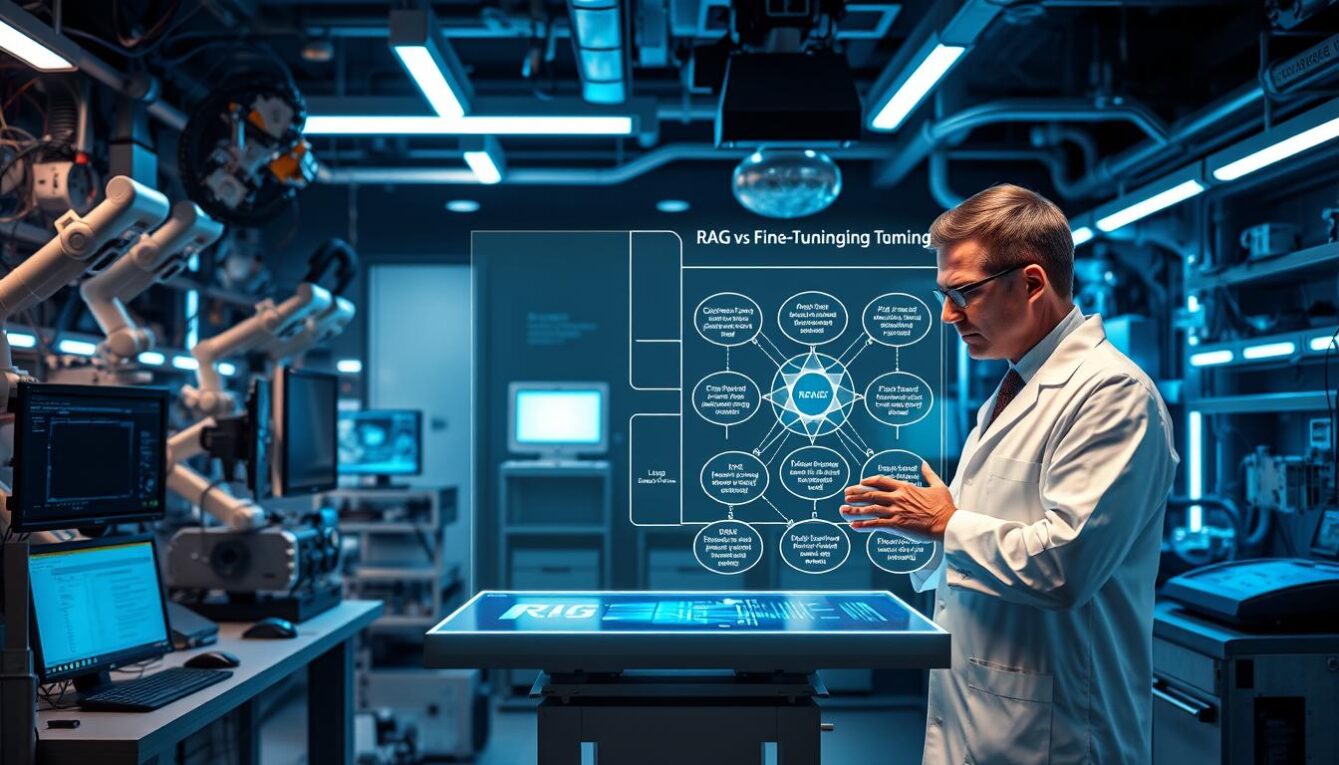Data science is an interdisciplinary field that involves the application of scientific methods, processes, and systems to extract knowledge and insights from data. Machine learning algorithms are one of the most essential tools used in data science. These algorithms can be used for both classification and regression problems, making them a versatile tool for data scientists. With the skills to build and deploy machine learning models, analyze data, and make informed decisions, data scientists can open doors to exciting career opportunities in data science. The democratization of various tools and techniques is making this period in data science even more exciting for new practitioners. Learning has revolutionized technology by enabling computers to learn from data and make data-driven decisions without explicit programming. This article will examine the top 10 machine learning algorithms commonly used across industries. These algorithms are proven effective and powerful tools for addressing intricate problems and enhancing business operations.
What are the different types of machine learning algorithms?
There are several types of machine learning algorithms, including supervised learning, unsupervised learning, semi-supervised learning, reinforcement learning, and deep learning. Each algorithm has its unique approach to analyzing data and making predictions or decisions based on that data.
Here are the 10 Best Machine Learning Algorithms
1. Linear Regression
Linear regression is a simple yet powerful algorithm commonly used to predict numerical values. It establishes a relationship between an independent variable (input) and a dependent variable (output) using the best-fit line, which is determined by minimizing the sum of squared errors.
Applications:
- Predicting sales, revenue, and other business metrics
- Analyzing the relationship between variables
- Forecasting trends and patterns
2. Logistic Regression
Logistic regression is a linear regression variation used for binary classification problems. Instead of predicting a continuous output, logistic regression predicts the probability of an event occurring. It uses the logistic function, which maps the input values to a probability value between 0 and 1.
Applications:
- Spam detection
- Customer churn prediction
- Medical diagnosis
3. Decision Trees
Decision trees are a type of algorithm that can be used for both classification and regression tasks. They work by recursively splitting the input space into regions based on the features and their values, resulting in a tree-like structure. Decision trees are easy to interpret and can handle categorical and numerical data. A decision tree resembles a flowchart, starting with a root node that asks a specific question about the data.
Applications:
- Fraud detection
- Customer segmentation
- Credit risk assessment
4. Random Forests
Random forests are an ensemble method that combines multiple decision trees to create a more accurate and robust model. Each tree is trained on a random subset of the data with replacement, and the final prediction is obtained by averaging the predictions of all the trees in the forest.
Applications:
- Predicting customer lifetime value
- Image classification
- Drug discovery
5. Support Vector Machines (SVM)
Support vector machines are powerful supervised learning algorithms for classification and regression tasks. They work by finding the optimal hyperplane that separates the data points of different classes with the maximum margin. SVM can handle high-dimensional data and is highly effective in dealing with nonlinear relationships.
Applications:
- Text classification
- Handwriting recognition
- Bioinformatics
6. K-Nearest Neighbors (KNN)
K-nearest neighbors are a simple and versatile algorithm for classification and regression tasks. It works by finding the K training examples closest to a new input point and making a prediction based on these neighbors’ majority vote or average.
Applications:
- Recommender systems
- Anomaly detection
- Computer vision
7. K-Means Clustering
K-means clustering is an unsupervised learning algorithm to partition data into K clusters based on similarity. Furthermore, the algorithm works by initializing K cluster centroids randomly and then iteratively updating the centroids and assigning data points to the nearest centroid until convergence.
Applications:
- Market segmentation
- Image compression
- Document clustering
8. Principal Component Analysis (PCA)
The principal component analysis is a dimensionality reduction technique that transforms a set of correlated variables into a smaller set of uncorrelated variables called principal components. PCA is commonly used to visualize high-dimensional data, reduce noise, and improve the performance of other machine learning algorithms.
Applications:
- Data visualization
- Feature extraction
- Noise reduction
9. Neural Networks
Neural networks are a class of machine learning algorithms that are inspired by the human brain and can learn complex patterns from data. They consist of interconnected layers of artificial neurons that process input and adjust their weights through backpropagation. Neural networks, specifically artificial neural networks, can be used for various tasks, such as image recognition, natural language processing, and game-playing.
Applications:
- Speech recognition
- Image classification
- Language Translation
10. Gradient Boosting
Gradient boosting is an ensemble learning technique that combines multiple weak learners, usually decision trees, to create a strong learner. It works by iteratively adding new trees that correct the errors of the previous trees using gradient descent optimization. Gradient boosting can be used for classification and regression tasks and is known for its high accuracy and flexibility.
Applications:
- Predicting customer churn
- Web search ranking
- Fraud detection
Top 10 Machine Learning Algorithms You Need to Know
Machine learning has advanced significantly in recent years and is shaping the future of technology and business. This article lists the top 10 algorithms widely used in various industries. Understanding their capabilities can help unlock the potential of machine learning for your projects. Significant results can be achieved by selecting the appropriate algorithm for your problem and fine-tuning its parameters, driving innovation in your organization.
FAQ’s
What machine learning algorithms can you use?
Several machine learning algorithms can be used, depending on the specific problem you are trying to solve and the type of data you have. Some standard machine-learning algorithms include:
– Linear regression: Used for predicting continuous numerical values based on a linear relationship between variables.
– Logistic regression: Used for classification problems where the outcome is binary (e.g., yes/no, true/false).
– Decision trees: Used for both classification and regression problems by creating a tree-like model of decisions and their possible consequences.
– Random forests: An ensemble method that combines multiple decision trees to make predictions more accurate and robust.
– Support vector machines (SVM): Used for both classification and regression problems by finding the best hyperplane that separates different classes or predicts numerical values.
– Naive Bayes: A probabilistic algorithm commonly used for text classification tasks, such as spam detection or sentiment analysis.
– K-nearest neighbors (KNN): A lazy learning algorithm that uses the class labels of k nearest neighbors to make predictions.
– Neural networks: Deep learning models composed of interconnected nodes (artificial neurons) that can learn complex patterns in data.
These are just a few examples, and many other algorithms are available depending on your project’s specific requirements. Choosing an algorithm that aligns with your data and problem statement is essential.
What is the difference between supervised and unsupervised learning algorithms?
Supervised and unsupervised learning are two different types of machine learning algorithms.
In supervised learning, the algorithm is provided with labeled training data, meaning each input data point is associated with a corresponding output label. The algorithm aims to learn a mapping between the input data and the output labels to accurately predict the output for new, unseen data points. Examples of supervised learning algorithms include linear regression, decision trees, support vector machines, and the Naïve Bayes classifier algorithm. The Naïve Bayes classifier algorithm is a popular machine learning algorithm used for classification tasks. It is based on Bayes’ theorem and classifies every value as independent of any other value. It allows us to predict a class/category, based on a given set of features using probability.
On the other hand, unsupervised learning algorithms are used when the training data has no associated output labels. The algorithm’s task is to find patterns or structure in the unlabeled data independently. Unsupervised learning can be used for tasks such as clustering, where similar data points are grouped, or dimensionality reduction, where high-dimensional data is transformed into a lower-dimensional representation. Examples of unsupervised learning algorithms include k-means clustering, hierarchical clustering, and principal component analysis (PCA).
In summary, supervised learning algorithms require labeled training data to learn a mapping between inputs and outputs. In contrast, unsupervised learning algorithms do not rely on labeled data and instead aim to find patterns or structures in the data independently.
Can deep learning algorithms be used in all types of machine learning projects?
No, deep learning algorithms are unsuitable for all machine learning projects. Deep learning algorithms, a subset of machine learning algorithms that mimic the human brain’s neural networks, are particularly effective in tasks involving large amounts of data and complex patterns, such as image recognition, natural language processing, and speech recognition. However, for simpler tasks or projects with limited data, other machine learning algorithms may be more appropriate. It is important to carefully consider your project’s specific requirements and characteristics when selecting the appropriate algorithm to use.
Artificial intelligence (AI) and machine learning are often used interchangeably but differ. AI is the broader concept of machines being able to carry out tasks in a way that we would consider “smart.” Machine learning is a subset of AI that involves feeding data into an algorithm and training it to make predictions or decisions based on that data. There are various machine learning algorithms, such as supervised, unsupervised, and reinforcement learning. These algorithms have been used in various applications, from image recognition to speech recognition, fraud detection, and even self-driving cars.
What is predictive modeling?
Predictive modeling uses machine learning algorithms to predict future outcomes based on historical data. These algorithms are used to analyze complex data sets and identify patterns that can be used to make predictions about new data. Linear regression is an algorithm primarily used for predictive modeling, which helps understand how changes in the input variable affect the output variable. Another popular tool is Principal Component Analysis (PCA), used for exploratory data analysis and predictive modeling. By understanding the different algorithms and their applications, businesses can use them to solve real-time problems and make informed decisions. Additionally, linear discriminant analysis (LDA) is another important machine learning algorithm used for dimensionality reduction and classification tasks.
What do you use Time series?
Time series forecasting is an essential area of machine learning algorithms. It is widely used in various domains, such as finance, healthcare, and marketing to make predictions based on historical data. Many time series algorithms are available, including ARIMA, exponential smoothing, and moving averages. Before applying any algorithm to the data, it is essential to check whether the data is stationary. This can be done using techniques such as the Augmented Dickey-Fuller test in R or Python.
What is simple linear regression?
In machine learning, simple linear regression is an analysis used to understand the relationship between two continuous variables. It involves fitting a line, known as the “regression line,” to a set of data points that best represents the relationship between the independent and dependent variables. This algorithm is commonly used for prediction problems such as stock market prediction. However, many other algorithms, including the regression line, are available for different tasks and applications in machine learning.










